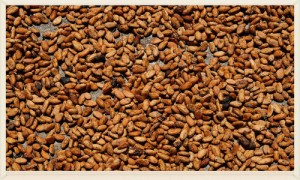For business writers, enlightening readers about the local ramifications of global events is interesting and rewarding. And this week, with all eyes on Scotland, you might take a few moments to show your audience how happenings across the pond might ripple back toward them.
Scotland, a member of the United Kingdom, is allowing citizens to decide Thursday whether or not Scotland should become an independent state; it’s obviously a decision that will have enduring economic, political and social consequences for all of the U.K. and Europe. (Think about the movement that wants Texas to secede from the United States and how it would feel if that actually came down to a vote, to get a sense of the identity crisis this weeks’ referendum is stirring in the U.K.)
Polls say the outcome is too close to call, and political leaders on both sides are vigorously arguing their cases. Here’s an NBCNews primer, Ten things to know about Scotland’s independence referendum that will help you with background on what it calls Britain’s biggest constitutional upheaval since the revolutionary wars.
Yes, yes, some might be thinking — the constitutional crisis, the history in the making — we get it, but what about the whisky?! What’s this going to do to the price of my single malt?
The United States buys more of that country’s potent amber liquor (and don’t call it whiskey; the Scots prefer their own spelling without the e) than any other nation, about $1 billion worth each year, according to Quartz. According to CNNMoney, about 40 bottles per second are shipped out of that country every second, and Scotch whisky makers are worried that Scotland could lose out on trade privileges, or face stumbles over an independent currency. The Scotch Whisky Association, the trade group, points out on its website that its industry sells to 200 nations and that a new Scottish government would be hard pressed to support half of that with diplomatic and trade infrastructure.
Are U.S. Scotch whisky dealers worried?
I think it would be interesting to talk with area liquor dealers, wholesalers, retailers and restaurants about demand trends in your area, any concerns they may have about access to the levels of quality and quantity of Scotch their business needs, and other items of interest related to the booze. Are “economy blends” rising in popularity in your market, as this Spirits Business piece says they are in some regions? Check with your state’s regulators – the liquor control commission or similar body — about available data. Can you graph which ZIP codes or counties are buying which brands of Scotch and how much?
What about the secondary market or trade in rare Scotch whiskys? Bloomberg Businessweek says there’s a “Bull market in single malts” and yes, there is an index to track investment-grade bottle business; counterfeits also are becoming a problem. Has any bogus booze been showing up on top shelves in your neck of the woods?
On a contrarian note, instead of writing about imports from Scotland, you could take a look at local distillers trying to give the masters a run for their barley. And here’s a piece from the Columbian in Washington state’s Skagit County about the specialty business of growing and producing malts for distillers, brewers and bakers.
Energy is a big Scottish export and of course, so is salmon as this recent BBC piece points out. And Today.com says thanks to Outlander, Scottish food may be “the next big thing” from haggis (no!) to savory pies.
Just as a note; because Scotland still is part of the U.K., at least as of this writing, the usual import/export data for just that region is not available from the U.S. Trade Representative; here, however, is a BBC piece about the size of the Scotland economy; it notes that many of the countries top producing companies aren’t owned within the country.











